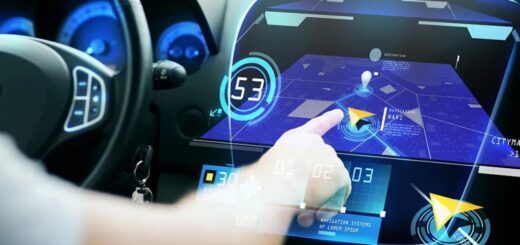The Future of Commuting: How AI and Automation are Transforming Transportation
The transportation landscape is undergoing a significant transformation, driven by the advancements in artificial intelligence (AI) and automation. These technologies are reshaping how we commute, offering unprecedented levels of efficiency, safety, and convenience. As we look towards the future, it’s clear that AI and automation will play a pivotal role in creating smarter and more sustainable transportation systems.
AI-Driven Traffic Management
One of the most immediate impacts of AI in transportation is its ability to optimize traffic management. AI algorithms can analyze real-time data from various sources, such as traffic cameras, sensors, and GPS devices, to manage traffic flow more efficiently.
“AI-driven traffic management systems can reduce congestion by up to 30%,” says Dr. Emily Harper, a transportation researcher at MIT. “These systems can predict traffic patterns and adjust traffic signals accordingly to minimize delays.”
By reducing congestion, AI not only improves commute times but also lowers fuel consumption and emissions, contributing to a more sustainable environment.
Autonomous Vehicles
Autonomous vehicles (AVs) are perhaps the most visible manifestation of AI and automation in transportation. Companies like Tesla, Waymo, and Uber are at the forefront of developing self-driving cars that promise to revolutionize commuting.
“Autonomous vehicles have the potential to eliminate human error, which is responsible for 94% of traffic accidents,” explains David Borg. “This could lead to a dramatic decrease in road fatalities and injuries.”
Moreover, AVs can operate more efficiently than human-driven cars, reducing traffic congestion and fuel consumption. They also offer mobility solutions for people who are unable to drive, such as the elderly and disabled.
Smart Public Transportation
AI and automation are also transforming public transportation. AI-powered systems can optimize routes, schedules, and maintenance for buses, trains, and other public transport services.
“By using AI to analyze passenger data, we can adjust schedules and routes in real-time to meet demand,” says Sarah Thompson, a planner at the Metropolitan Transportation Authority. “This ensures that public transportation is more reliable and efficient.”
Smart public transportation systems can also integrate with other modes of transport, such as ride-sharing and bike-sharing, to provide seamless, door-to-door commuting solutions.
Predictive Maintenance
Maintenance is a critical aspect of transportation infrastructure, and AI is revolutionizing how it is performed. Predictive maintenance uses AI to analyze data from vehicles and infrastructure to predict when maintenance is needed.
“Predictive maintenance can reduce downtime by 50% and maintenance costs by 30%,” notes Michael Wilson, an engineer at General Motors. “It helps prevent breakdowns and extends the lifespan of vehicles and infrastructure.”
This proactive approach ensures that transportation systems are always in optimal condition, improving safety and reliability for commuters.
Personalized Commuting Experiences
AI is enabling personalized commuting experiences by analyzing individual preferences and behaviors. Apps and services can offer tailored recommendations for routes, modes of transport, and departure times.
“Personalized commuting apps can reduce travel time by up to 20%,” says Laura Chen, CEO of CommuteSmart. “They provide real-time updates and alternative routes based on current traffic conditions and user preferences.”
This personalization enhances the commuting experience, making it more convenient and less stressful for users.
Environmental Impact
AI and automation are also contributing to the sustainability of transportation systems. By optimizing traffic flow, improving fuel efficiency, and promoting the use of electric and autonomous vehicles, these technologies can significantly reduce the environmental impact of commuting.
“Sustainable transportation is a key goal of AI and automation,” emphasizes Dr. Mark Green, an environmental scientist. “These technologies can help us achieve lower emissions and a smaller carbon footprint.”
The integration of renewable energy sources with smart grids and electric vehicle charging stations is another area where AI is making a difference, supporting the transition to greener transportation.
The future of commuting is being shaped by AI and automation, with profound implications for efficiency, safety, and sustainability. From AI-driven traffic management to autonomous vehicles and personalized commuting experiences, these technologies are transforming how we travel. As they continue to evolve, they promise to create smarter, more responsive, and environmentally friendly transportation systems. Embracing these innovations will be crucial for cities and countries aiming to meet the demands of modern commuters while addressing the challenges of urbanization and climate change.

















Recent Comments